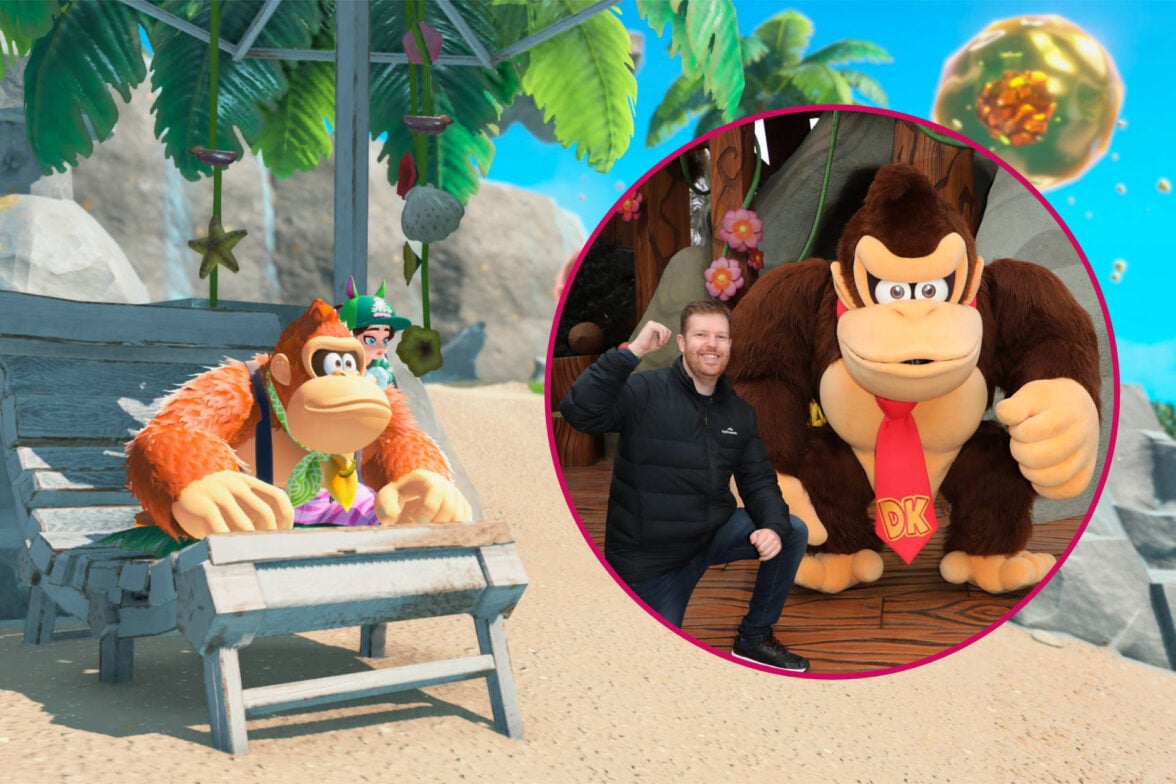Let me share an industry secret with you: there’s no such thing as an “objective” review. No matter how many quantifiable metrics exist, there’s always an element of subjectivity. Everyone has inherent biases too that implicitly — and sometimes explicitly — influence a person’s judgement.
I mention all of this because when reviewing Donkey Kong Bananza, I can’t possibly remove my banana-yellow-tinted glasses. Whatever gene gives a person the predisposition to loving Donkey Kong, that’s what I was born with. I’m cited on News.com.au as a “super fan”, so there’s no shying away from it.
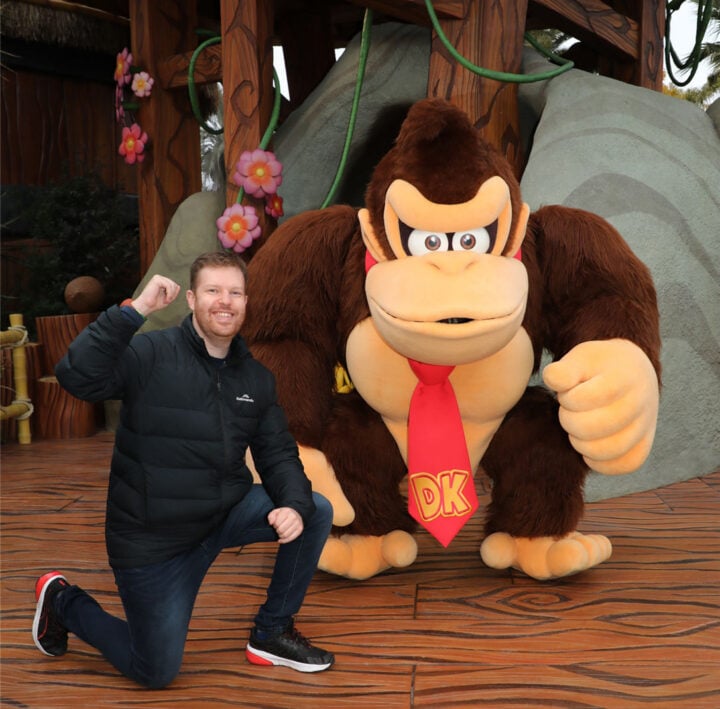
Donkey Kong Bananza is a brilliant game, one that visibly demonstrates just how much bigger, stronger, and faster the Nintendo Switch 2 is. It’s a game of freeform destructive expression that gleefully hands you the keys to a gorilla-shaped wrecking ball and lets you run amok.
What Bananza lacks in challenge, it more than makes up for in joy. While I was initially sceptical of Donkey Kong’s redesign, his dopey charm and penchant for destruction won me over. DK’s newfound friendship with a young Pauline is also wonderfully endearing, as the wordless ape supports the aspiring songstress through actions and comically timed grunts.
So much of the delight in Bananza stems from a sense of freedom. Nintendo previously nailed the “if you can see it, you can go there” ethos with The Legend of Zelda: Breath of the Wild. With Bananza, that design philosophy evolves into “if you can see it, you can smash it until it’s completely unrecognisable”.
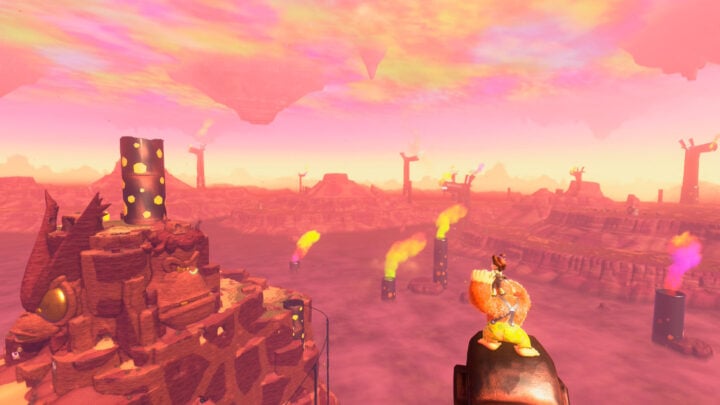
One of my favourite games is Super Mario Odyssey, made by the same development team as Bananza. Mario may have his agility and vertical prowess, but Donkey Kong can brute force his way through just about anything.
As it turns out, it’s an equally brilliant approach to 3D platforming.
He’s finally here
Playing Donkey Kong Bananza took me back to my country hometown, where my dad took me to the local arcade during his lunch breaks to play the 1981 Donkey Kong machine. It inspired a lifelong love of all things Kong, especially the brilliant 2D-platforming Donkey Kong Country series.
Nintendo hasn’t forgotten DK’s history, either. Bananza regularly pays homage to previous games in both subtle and overt ways. Every major collectible conjures a soundbite referencing Donkey Kong 64, while David Wise’s musical fingerprints can be found everywhere. But it’s not a simple crowd-pleasing greatest hits compilation — not that I would’ve complained.
Bananza also marks a welcome return to gaming’s original damsel in distress: Pauline. Except this time, she’s a substantially more fully-formed character. The delicate yin to the destructive Donkey Kong’s yang, Pauline doubles as a sugary sweet narrative foil and an integral part of the gameplay.
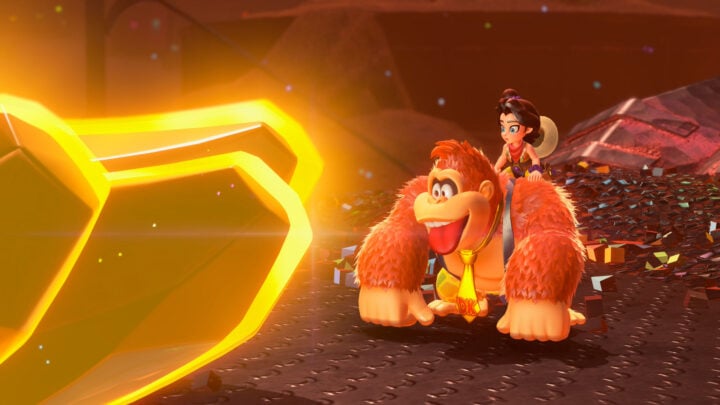
Donkey Kong’s return to the world of 3D lets the simian scallywag loose, using the surrounding environment as your greatest weapon. Capable of tearing chunks of rock from the ground, DK can smash through nearly any surface and anyone.
Given that each level is an open-ended playground of primate rage, half the fun is in forging your own path. Each level introduces new concepts and twists on existing ones, relying on the environment and DK’s abilities to problem-solve along the way.
Like Super Mario Odyssey, collectables are plentiful in Bananza; Banandium Gems are the main objective, accompanied by fossils that are exchanged for silly outfits and fur dyes. The cadence at which these items are doled out is non-stop. To think that the abundance of Banandium Gems would lessen the impact of collecting them would be a mistake.
Instead of cheapening the element of discovery, Bananza breadcrumbs (banana-crumbs?) you to increasingly more delightful nooks and crannies of its vibrant sandboxes. Even a brief moment with one of the game’s many charming characters is reward enough for diverting from the main goal.
It also reinforces that approach I alluded to earlier. Bananza has a main objective to follow, but it doesn’t care how you get there, as long as you have a ripper of a time along the way.
Donkey Kong Bananza modernises the king of swing
I’ve grown increasingly frustrated over the years at modern games’ insistence on arbitrarily introducing RPG-like elements. I do not give a monkey’s furry arse about equipping a trinket to increase some obscure statistic by 6.4%. Get that nonsense out of my face.
To my initial dismay, Donkey Kong Bananza has its version of an RPG progression system. Collect enough Banandium gems, and you can upgrade DK’s strength or unlock a new move. Once you gain Bananza transformations — Donkey Kong disturbingly mutates into a half-gorilla, half of another animal, thanks to the power of Pauline’s singing — you can also boost those abilities too.
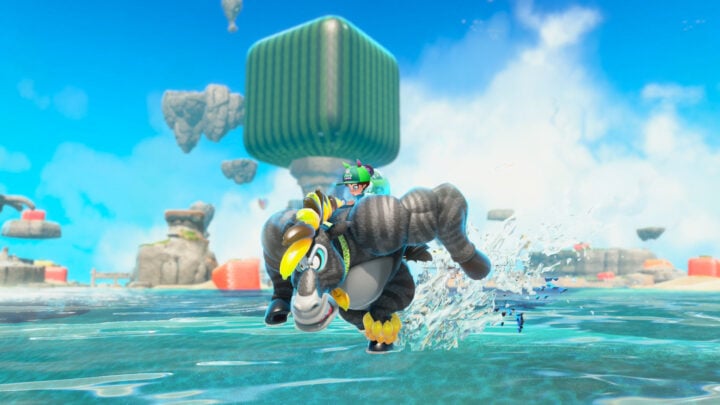
And yet, Bananza’s RPG elements never grated. Perhaps it’s the aforementioned banana-tinted glasses, but levelling up DK’s skills didn’t make me want to throw my horde of bananas out the window.
Aside from a couple of early-game instances, like the ability to double-jump using loose terrain, these upgrades feel meaningful without unnecessarily gating off progress. They incentivise finding Banandium Gems, which aren’t terribly difficult to obtain. Upgrading DK’s abilities makes a tangible difference, like punching through harder surfaces quicker, or surfing on chunks of turf for longer.
As suggested through a series of developer interviews, Donkey Kong Bananza may have originated as an original Switch title, but it ultimately makes the most of the Switch 2 hardware. Debris flies everywhere with every punch and slam, with the surrounding environment responding accordingly.
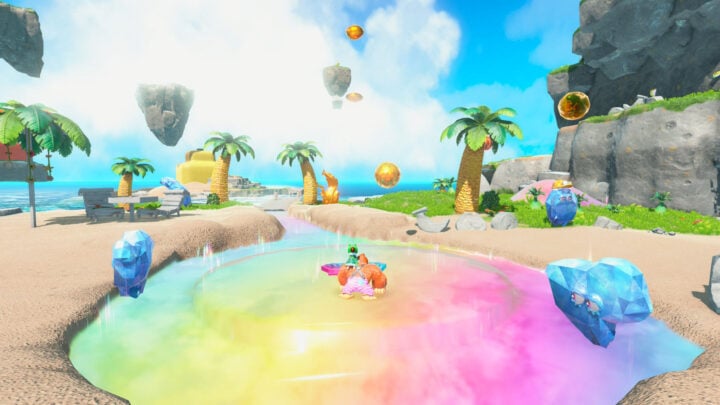
Hearing the resulting tinkles of metallic gold chunks scattering everywhere Pavlov dogged me into seeking destruction at every moment. It tickled the primal part of my brain that lights up at seeing fireworks or a monster truck crushing cars under its hulking wheels.
When suggesting outlets for venting anger, playing Donkey Kong Bananza should be right up there with axe-throwing and smash rooms.
Donkey Kong Bananza takes it easy
Challenge is the biggest difference between Donkey Kong Bananza and Super Mario Odyssey. Bananza‘s sheer freedom often comes at the expense of difficulty. I beat several early bosses in the blink of an eye, while the platforming didn’t ask much of me.
By the time Bananza presents more complex enemy encounters and environmental challenges, it’s almost too late. There’s difficulty to be found, but it’s not as consistently challenging as DK’s signature 2D adventures, even in the late-game.
In Odyssey, Mario moves with more agility, enabling more dexterous platforming sections. But Bananza compensates by tasking you with environmental puzzles that make you think about how to use the tools available to you, as opposed to simply reacting to the obstacle in front of you.
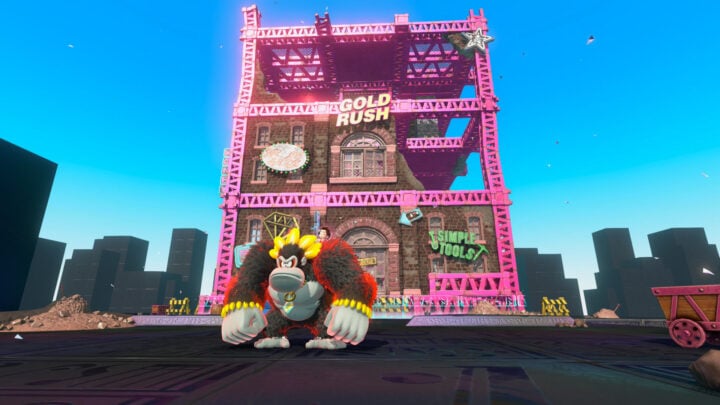
It’s a different style of 3D platformer from Odyssey, and even Astro Bot. Both literally and metaphorically, Bananza is equally a mile wide and a mile deep. Jumping and running are less of a focus than traditional 3D platformers. It’s different, not lesser, and rethinks genre conventions.
Compared to Odyssey, Bananza also has less of a through line connecting its levels. Thematically, they don’t tie in as neatly as Mario’s eponymous Odyssey, flying between different lands. Bananza‘s garbage disposal and food factory-themed levels epitomise this, dragging out the already-generous runtime with areas that only tenously link to the rest of the game.
But what am I doing, attempting to apply logic to a game about a big monkey with his magical singing buddy?
Worth the wait?
I’ve waited a long time for another 3D Donkey Kong game. Waiting does funny things to your expectations, building up ideas that reality could never live up to.
Yet Donkey Kong Bananza lives up to those lofty dreams. Deftly balancing the past with the present, it’s made this Donkey Kong-obsessed lad incredibly happy. A smorgasbord of smash, Bananza‘s tactility makes every moment joyous. Every punch, every jump, and every note sung reveals another layer to this primate playground that rewards your every move.
I don’t know what the future holds for Donkey Kong and Pauline, but I hope this kickstarts a bright new era for two of gaming’s most important figures.
